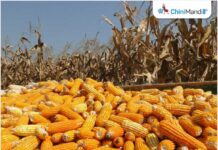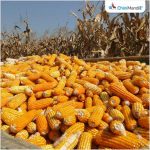The groundbreaking scientific achievement of decoding the sugarcane genome, as outlined in the research article “Deciphering the Sweet Mysteries of Sugarcane: Genome Sequencing Ushers in a New Era for Sustainability,” published in Nature on March 27, 2024, holds the potential to transform this crucial crop. The study revealed genes associated with sugar production, disease resistance, and drought tolerance, and provided insights into sugarcane’s evolutionary history. This knowledge could assist in the development of high-yielding, disease-resistant sugarcane varieties, optimization of sugar extraction, and exploration of biofuel production. However, the authors recognize the challenges in applying these findings and underscore the need for further research, international collaboration, and transparent communication with stakeholders.
Understanding Genome Mapping:
Consider sugarcane as a comprehensive manual, filled with codes that determine every aspect of the plant, from its sweetness to its ability to resist diseases. Genome mapping of sugarcane can be compared to a detailed decryption of this entire manual. In more detail, genome mapping is a technique used to assign a location to each gene on a particular chromosome. It’s akin to creating a genetic ‘address’ for each gene. In the context of sugarcane, this process involves identifying and locating each gene that contributes to the plant’s characteristics. This could include genes responsible for the plant’s sweetness, which is a critical factor for its use in sugar production. It could also involve identifying genes that give the plant resistance to diseases, a crucial aspect for ensuring healthy and abundant crops. The process of genome mapping is meticulous and requires advanced scientific techniques. It involves sequencing the plant’s DNA, identifying genetic markers, and using this information to create a map of the plant’s genome. This map then serves as a valuable tool for plant breeders and researchers, helping them understand the plant’s genetic makeup and how its genes interact with each other. In conclusion, genome mapping of sugarcane is a complex but essential process in understanding and improving this economically important crop.
Key Players in Sugarcane Genome Mapping and Sequencing: The process of genome mapping and sequencing of sugarcane is typically carried out by a collective of researchers from various global institutions. The key entities involved in the mapping of the sugarcane genome include the International Consortium for Sugarcane Biotechnology (ICSB), which is a worldwide coalition of research groups with major contributors such as CIRAD (France), São Paulo State University (Brazil), Sugarcane Breeding Institute (India), Australian Centre for Plant Functional Genomics, University of Florida (USA), and Beijing Genome Institute (China). Several government-funded agricultural research centers like the USDA Agricultural Research Service (USA), Brazilian Agricultural Research Corporation (Embrapa), Indian Council of Agricultural Research (ICAR), and Chinese Academy of Agricultural Sciences have active sugarcane genomics programs. Numerous university-based plant science and genomics labs such as the University of Illinois (USA), University of Campinas (Brazil), University of Stellenbosch (South Africa), and University of Queensland (Australia) are also involved. Major agribiotech companies like Monsanto (now Bayer), Syngenta, and Dow AgroSciences have invested in sugarcane genomics research for crop improvement. Non-profit organizations like the International Rice Research Institute (IRRI) and the Joint Genome Institute (JGI) have contributed to sugarcane genome studies. These mapping efforts bring together expertise across disciplines like molecular biology, bioinformatics, genetics, breeding, and agronomy. The large, complex sugarcane genome necessitates coordinated global collaborations that harness the latest DNA sequencing and computational technologies. The significant progress in this field has been accelerated by open data sharing among institutions.
Outcomes of Sugarcane Genome Mapping: Mapping and sequencing the entire genome of sugarcane not only paves the way for creating genetically modified (GM) varieties but also provides a comprehensive understanding of the genetic blueprint that underpins sugarcane’s traits, physiology, and behaviour. This genomic information can be harnessed to benefit sugarcane improvement programs and enhance the crop’s overall sustainability. The key benefits of genome mapping for sugarcane include precision breeding, which allows breeders to selectively cross parents with beneficial gene combinations, thereby accelerating the development of improved non-GM sugarcane varieties through marker-assisted breeding. It also aids in gene discovery and functional genomics, enabling the identification and characterization of sugarcane genes related to key agronomic traits. This not only provides targets for genetic engineering but also reveals opportunities for optimizing crop management practices based on the plant’s genetic responses. Genome mapping also facilitates genetic diversity analysis across diverse sugarcane cultivars and wild relatives, comparative genomics with other crops and plants, and evolutionary studies to understand the crop’s origins and domestication. It provides biological insights at a fundamental level and allows for non-GM optimization of aspects like nutrient management, stress response, and growth patterns through data-driven crop modelling and precision agriculture. In essence, while GM sugarcane creation is a significant application, genome mapping serves as a broader enabling technology that generates a wealth of knowledge and tools to enhance sugarcane’s genetic improvement, productivity, resilience, and sustainable cultivation through various strategies beyond just transgenics, thereby laying a comprehensive foundation for innovation in sugarcane agriculture.
Implications of Sugarcane Genome Mapping: Genome mapping has revolutionized sugarcane research, enabling the creation of GM varieties and providing a comprehensive understanding of sugarcane’s genetic blueprint. This information can enhance sugarcane improvement programs and sustainability. Key advantages include precision breeding, gene discovery, genetic diversity analysis, comparative genomics, evolutionary studies, biological insights, and non-GM optimization. However, potential disadvantages include high costs, time consumption, complexity of the sugarcane genome, ethical concerns, regulatory hurdles, unintended consequences, public acceptance issues, and over-reliance on technology. While genome mapping offers great promise for improving sugarcane, these potential disadvantages must be considered and addressed in the research and application of this technology.
Governmental Resistance to GM Sugarcane Varieties:
- Regulatory Challenges: Many countries lack an efficient regulatory framework for GM crops like sugarcane, making the approval process extensive and expensive.
- Public Acceptance: Significant public skepticism towards GM crops, especially food crops, exists in certain regions.
- Trade Considerations: Restrictions on GM crop imports by major sugarcane importers could negatively impact trade.
- Environmental Concerns: Concerns exist about potential gene flow from GM sugarcane to wild relatives and unforeseen environmental impacts.
- Food Security and Socioeconomic Impacts: GM sugarcane could potentially consolidate control by large agribusinesses, affecting rural livelihoods and food sovereignty.
- Capability Shortfalls: Many sugarcane-producing countries lack the necessary resources and capacities to evaluate GM crop safety.
- Industry Alignment: Some industry segments may have reservations about GM technology disrupting supply chains. However, as the benefits of GM sugarcane become more evident, more countries may be open to commercializing approved GM cane varieties. Ongoing research into developing safe, sustainable, and economically viable GM sugarcane remains a priority.
Advantages of Sugarcane Genome Mapping: Genome mapping of sugarcane can lead to enhanced food security through disease resistance and boosted sugar production. It can contribute to sustainable biofuels through optimized bioethanol production and eco-friendly products like biodegradable plastics and green lubricants. It can promote sustainable agriculture through precision farming. Overall, it can lead to economic growth, reduced environmental impact, and food and fuel security. However, these are potential benefits and responsible development and ongoing research are essential.
Potential Drawbacks: These include unintended consequences, biodiversity loss, unequal access, ethical concerns, consumer acceptance issues, and long-term environmental impacts. These drawbacks can be mitigated through careful planning, rigorous testing, open communication, and ethical considerations.
Advantages by Sector:
- Sugar Industry:Increased sugarcane production, cost efficiency, and innovation in sugarcane products.
- Farmers:Improved economic stability, reduced dependence on pesticides, and access to advanced technologies.
- Environment:Reduction in pesticide use, promotion of sustainable biofuels, and creation of eco-friendly products.
- Additional Benefits:Contribution to food security, stimulation of economic growth, and progress in plant science. These are potential benefits and it’s crucial to carry out responsible development and ongoing research to realize these benefits while minimizing risks.
Estimating the Impact Timeline: The timeline for significant effects of sugarcane genome mapping is uncertain due to factors like research and development, regulatory approval, and commercialization. Initial impacts, such as disease-resistant varieties or enhanced breeding practices, could be seen in 5-10 years. Broader adoption of GE sugarcane varieties or bio-based products might take longer (10-15 years or more). This is an estimate and actual time frame could vary based on factors like research breakthroughs, regulatory changes, and public acceptance.
Conclusion: The mapping of the sugarcane genome is a significant advancement with potential to transform the sugar industry. It can lead to the cultivation of new sugarcane varieties that are more resistant to diseases, yield more, and require fewer resources. This benefits all stakeholders: the sugar industry, farmers, the environment, and consumers. However, potential challenges such as unforeseen consequences, loss of biodiversity, and unequal access need careful consideration. Transparent communication, responsible development, and continuous research are essential. The timeline for achieving these benefits is uncertain, but the potential rewards are immense. This summary encapsulates the essence of a research article about the decoding of the sugarcane genome. It emphasizes the scientific achievement, key findings, potential applications, and acknowledges future directions and challenges. The regulatory approval process for genetically engineered (GE) crops can be extensive. Once approved, companies must develop commercially viable seeds. It’s probable that we’ll witness some initial impacts of sugarcane genome mapping within the next 5-10 years. The broader adoption might take longer due to the regulatory process and steps involved in commercialization. This is merely an estimate, and the actual time frame could vary.
Disclaimer: The views and opinions expressed in the article by Dilip Patil, Managing Director of Samarth SSK Ltd., are solely his own.












